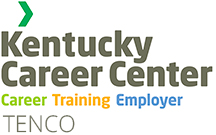National AEFL Week originated in 2009 when the National Coalition for Literacy worked with then-Congressman Jared Polis (D-CO), then-Senator Lamar Alexander (R-TN), and Senator Patty Murray (D-WA) to create a Congressionally-recognized designation that would draw attention to the importance of adult education and family literacy. Since then, NCL has sponsored National AEFL Week in September each year on behalf of its members and the field as a whole, and has worked with Members of Congress to have the week recognized through resolutions in the Senate and the House of Representatives.
Today, about 317,000 working-age Kentuckians do not have a high school or GED diploma. Our mission is to work with Kentuckians to improve their quality of life through education, training, and employment so they can take care of themselves and their families and help their communities and the state’s economies expand and thrive.
Kentucky Adult Education provides free adult education services in all 120 counties to help Kentuckians obtain a GED. Through Kentucky Adult Education, Kentuckians can gain reading, math, and communications skills that place them on a path to higher education and training, and earn certifications to move ahead in their careers.
Local Kentucky Adult Education teachers are ready in every county to help you break through barriers to reach your education and career goals. We focus on where you are now and give you the tools you need to qualify for more and better jobs, classes and higher pay.
Kentucky Adult Education is in the Kentucky Education and Labor Cabinet within the Department of Workforce Investment.
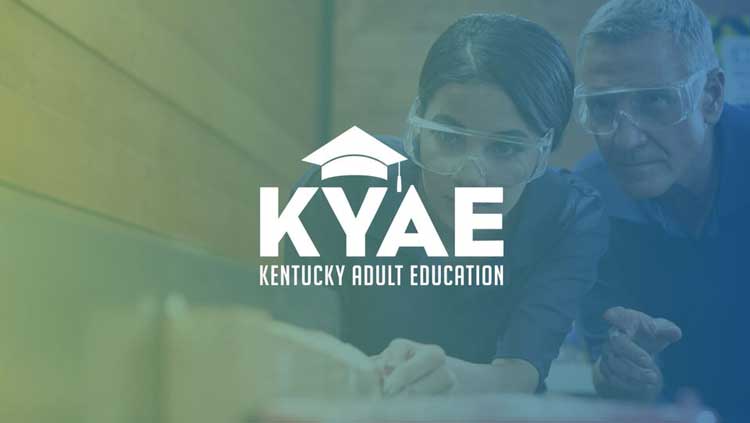
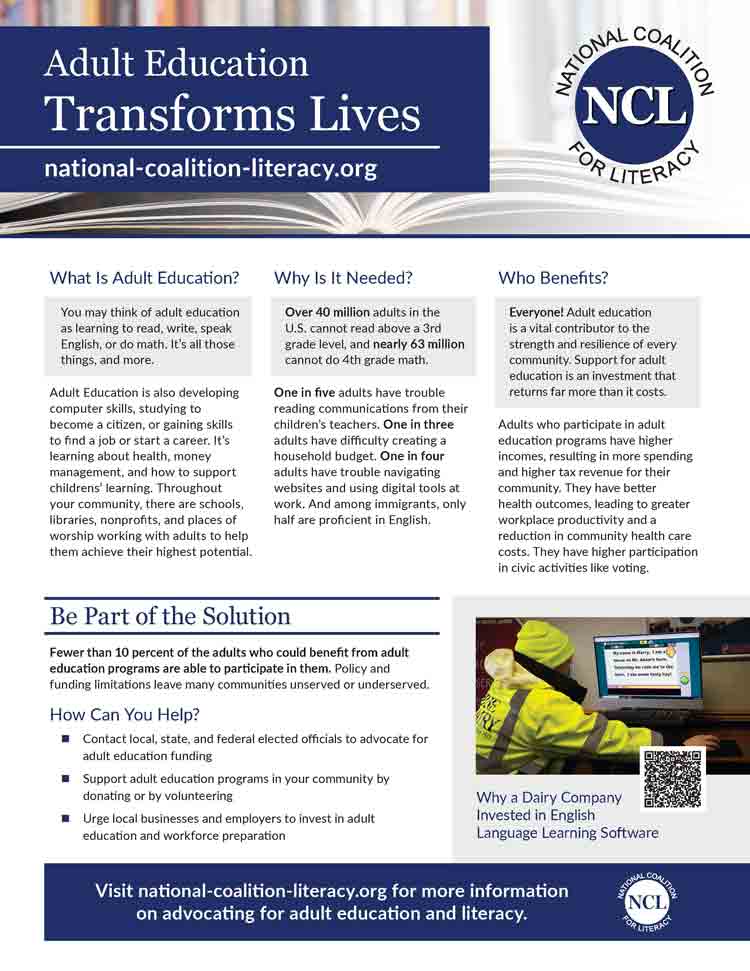
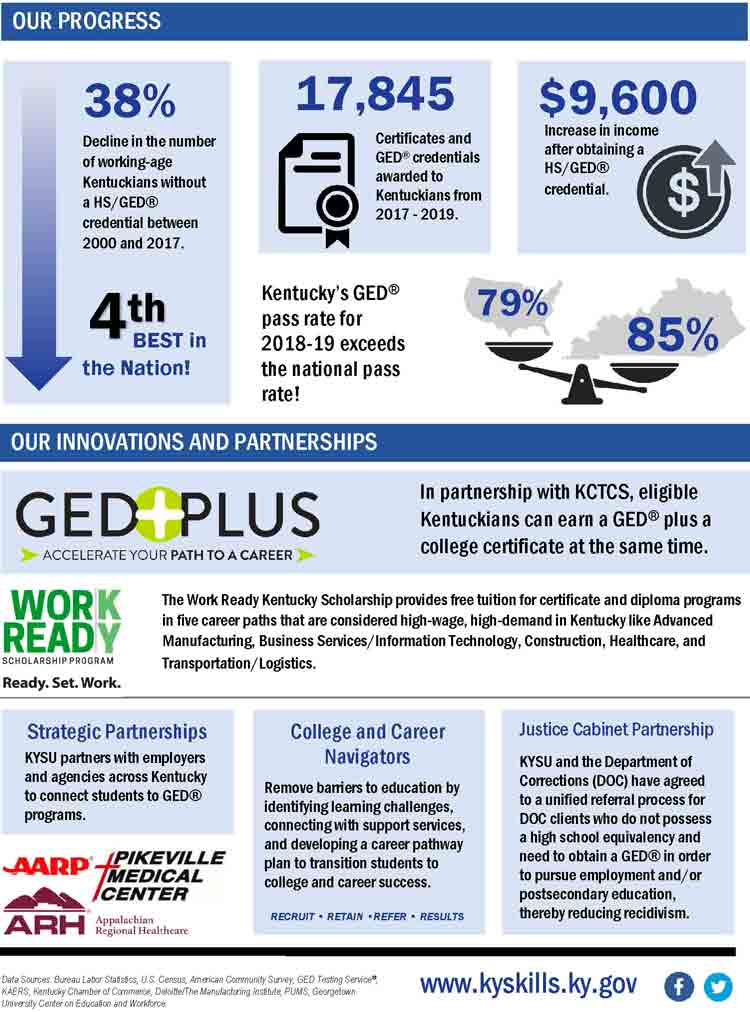
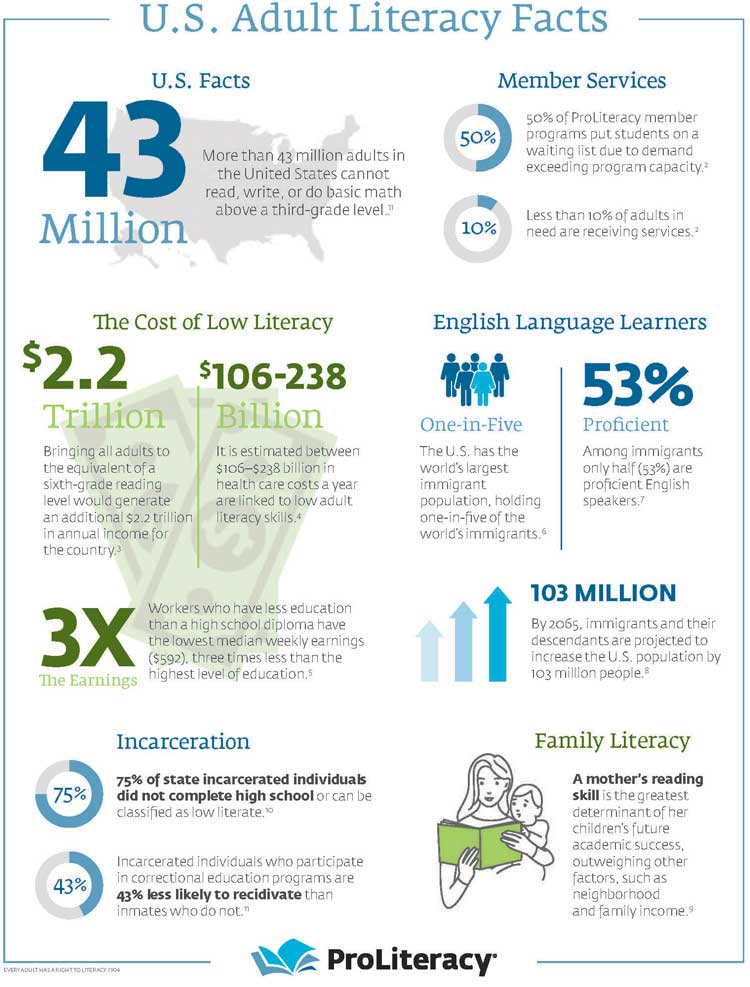
U.S. Adult Literacy Facts
References
- Adult Literacy in the United States. (2019 July), https://nces.ed.gov/pubs2019/2019179.pdf.
- ProLiteracyAnnual Statistical Report. (2021, January). https://www.proliteracy.org/Resources/Media-Kit/Brochures/Statistical-Report.
- J. (2020, September). Assessing the Economic Gains of Eradicating Illiteracy Nationally and Regionally in the United States. Barbara Bush Foundation for Family Literacy. https://www.barbarabush.org/new-economic-study/.
- Vernon J. A., Trujillo, A., Rosenbaum, S. ! DeBuono, B. (2007, October). Low health literacy: Implications for national health policy. Health Sciences Research Commons. Washington, DC: George Washington University. Retrieved from http://hsrc.himmelfarb.gwu.edu/sphhs_policy_facpubs/172/
- Career Outlook Data on Display. (2020, May). Learn more, earn more: Education leads to higher wages, lower unemployment: Career Outlook. U.S. Bureau of Labor Statistics. https://www.bls.gov/careeroutlook/2020/data-on-display/education-pays.htm.
- Connor, R, Cohn, D. V., !Gonzalez-Barrera, A. (2013, December^). Changing Patterns of Global Migration and Remittances. Pew Research Center’s Social ! Demographic Trends Project. https://www.pewresearch.org/social-trends/2013/12/17/changing-patterns-of-global-migration-and-remittances/.
- Budiman, A. (2020, August 20). Key findings about U.S. immigrants. Pew Research Center. https://www. pewresearch.0rg/fact-tank/2020/08/20/key-findings-a bout-u-s-im migrants/.
- Pew Research Center. (2015, September 28). Modern Immigration Wave Brings59Million to U.S. Pew Research Center’s HispanicTrends Project. https://www.pewresearch.org/hispanic/2015/09/28/modern-immigration-wave-brings-59-million-to-u-s-driving-population-growth-and-change-through-2065/
- S. Department of Health! Human Services. (2010, October 25). Improving mothers’ literacy skills may be best way to boost children’s achievement. National Institute of Health. https://www.nih.gov/news-events/news-releases/improving-mothers-literacy-skills-may-be-best-way-boost-childrens-achievement.
- Wolf Harlow, Ph.D, C. (2003). Bureau of justice Statistics Special Report: Education and Correctional Populations, https://www.bjs.gov/content/pub/pdf/ecp.pdf
- 11. Davis, L., Bozick, R., Steele, J., Saunders, J., ! Miles, J. (2013). Evaluating the Effectiveness of Correctional Education: A Meta-Analysis of Programs That Provide Education to Incarcerated Adults. https://doi.org/10.7249/rr266
